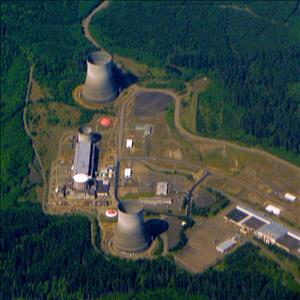On July 12, 1976, the Seattle City Council votes not to participate in two nuclear power plants and passes five resolutions adopting conservation as a long-term energy strategy. Mayor Wes Uhlman (b. 1935) and Seattle City Light Superintendent Gordon Vickery (1920-1996) want Seattle to purchase a 5 percent share of Washington Public Power Supply System's (WPPSS) Plants 4 and 5, but the council believes this to be too expensive. The council chooses to meet load growth with conservation as recommended in a study titled Energy 1990.
From Ever-increasing Exploitation to Conservation
In the late 1960s, Seattle City Light planned to meet load growth with construction of more hydroelectric dams and with power generated by thermal sources. WPPSS, an agency made up of publicly-owned utilities in the Northwest, launched construction of two nuclear power plants in Hanford and Satsop, Washington. The member utilities were invited to sign up for portions of the power generated in exchange for shares of the cost.
Under Mayor Uhlman, citizens were given a greater role in policy development including energy policy. Energy policy had been entirely in the hands of specialists at City Light. Planners expected that the demand for electricity would continue to double every 10 years as it had done in the past, hence the need for nuclear power. Citizens and consultants argued that growth would slow and that higher rates would slow load growth. In addition, conservation measures, such as insulating homes and amending building codes to include energy efficient materials, would equate building new sources of generation.
The need for a decision on WPPSS 4 and 5 and for a long-term policy came together on July 12, 1976. The council voted down participation in the nuclear plants. Councilman John Miller stated, "The heart of the matter can be stated in two sentences. It costs too much. And we don't need it [additional power]." All the votes against nuclear power were economic and not environmental. Councilman Sam Smith (1922-1995) stated that he also had some doubts about the safety of nuclear power.
Bum Decision?
Vickery called the vote, a "bum decision." Later, WPPSS would cancel construction of all the plants because of astronomical cost overruns and because the projected load growth did not materialize. The agency defaulted on $2.25 billion in bonds sold for Plants 4 and 5.
At the same time, the council adopted five resolutions making conservation the long-term energy policy in Seattle.

